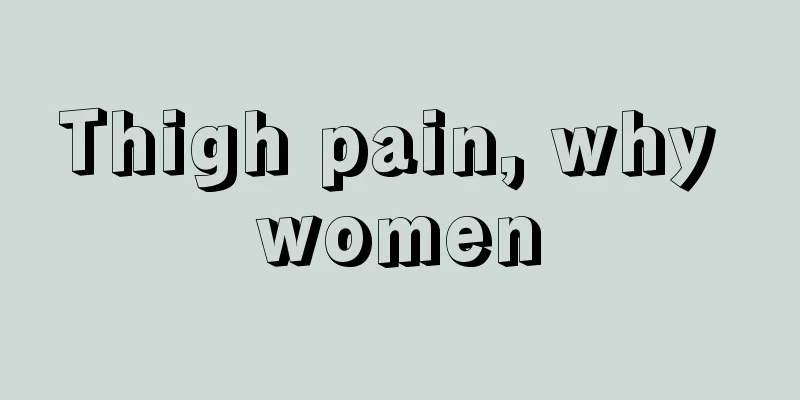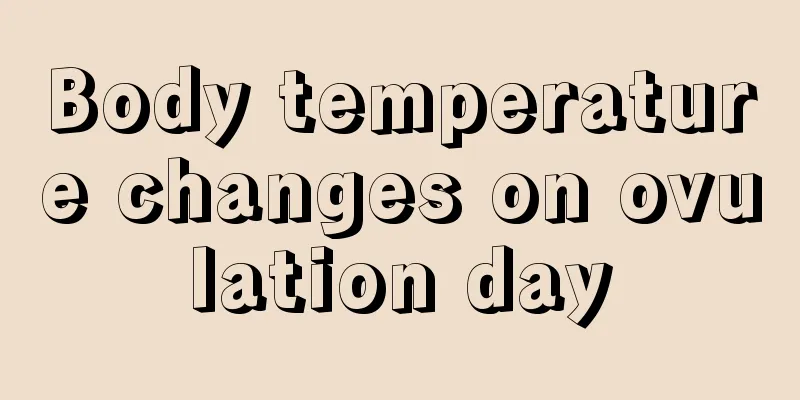Thigh pain, why women

|
If we exercise suddenly, we will experience muscle soreness, which will be relieved as long as we rest properly. If a woman experiences thigh pain, she can first rule out the possibility of sudden a lot of exercise recently or a bump on the thigh. If neither is the case, then it may be neural traction pain, such as lumbar disc herniation. Lumbar disc herniation is one of the more common diseases. It is mainly caused by different degrees of degenerative changes in the various parts of the lumbar disc (nucleus pulposus, annulus fibrosus and cartilage plate), especially the nucleus pulposus. Under the influence of external factors, the annulus fibrosus of the intervertebral disc ruptures, and the nucleus pulposus tissue protrudes (or falls out) from the rupture to the back or inside the spinal canal, causing the adjacent spinal nerve roots to be stimulated or compressed, resulting in a series of clinical symptoms such as low back pain, numbness and pain in one or both lower limbs. The highest incidence of lumbar disc herniation is at L4-5 and L5-S1, accounting for about 95%. 1. Low back pain It is the first symptom that occurs in most patients, with an incidence of about 91%. Because the outer layer of the annulus fibrosus and the posterior longitudinal ligament are stimulated by the nucleus pulposus, induced pain in the lower back is produced through the vertebral nerve, sometimes accompanied by buttocks pain. 2. Radiating pain in the lower limbs Although high-level lumbar disc herniation (L2-3, L3-4) can cause femoral neuralgia, it is rare in clinical practice, accounting for less than 5%. The vast majority of patients have herniation between L4 and 5, or L5 and S1, and present with sciatica. Typical sciatica is pain that radiates from the lower back to the buttocks, back of the thigh, outer side of the calf to the foot. The pain is aggravated by increased abdominal pressure due to sneezing and coughing. The radiating pain is mostly on one side of the limbs, and only a very small number of patients with central or paracentral nucleus pulposus herniation show symptoms in both lower limbs. There are three causes of sciatica: ① The ruptured intervertebral disc produces chemical stimulation and autoimmune reactions, causing chemical inflammation of the nerve roots; ② The protruding nucleus pulposus compresses or stretches the inflamed nerve roots, blocking their venous return, further aggravating edema and increasing sensitivity to pain; ③ The compressed nerve roots are ischemic. The above three factors are interrelated and aggravate each other. 3. Cauda equina symptoms The nucleus pulposus protruding to the rear or the prolapsed and free intervertebral disc tissue compresses the cauda equina, which mainly manifests as difficulty in defecation and urination, and abnormal sensation in the perineum and perianal area. In severe cases, symptoms such as incontinence and incomplete paralysis of both lower limbs may occur, which are rare in clinical practice. |
<<: What if I suddenly run out of milk during breastfeeding?
>>: Can I keep the pregnancy if I see blood at 40 days?
Recommend
What causes cervicitis?
Cervicitis is one of the most common diseases amo...
What color curtains are suitable? Should I install the curtains after I buy the furniture?
For the living room curtains, you can never go wr...
Lochia dark red
Women will secrete lochia after giving birth, whi...
Can I cover up the leg pain during confinement?
Leg pain during the confinement period is usually...
Dry and thick stools during breastfeeding
Constipation during breastfeeding is a common pro...
Can I get a uterine contraction injection after medical abortion?
No injections are needed after a medical abortion...
What is the difference between the Premier League and the Championship? Premier League ranking rules
The English Premier League is the top league of E...
What causes poor skin elasticity?
Skin is our internal organ for maintenance and it...
What causes pimples on female genitals?
The appearance of bumps on a woman's genitals...
What is the cause of female ovulation and implantation bleeding?
Implantation bleeding in women is relatively rare...
What is the difference between maternity sanitary napkins and ordinary sanitary napkins?
If the mother gives birth naturally, she will fee...
What kind of water is better to drink when we take medicine?
How should we drink water when we are sick and ta...
Psychological weaknesses of 40-year-old women
People at every stage have certain psychological ...
The process of female intrauterine device insertion
Contraception is very important for couples who a...
What to do if obesity causes irregular menstruation
There is a saying that goes: Being fat is a bless...









